Befitting the courts of the ancien régime, an ardently embraced formality lingers, with proper seated dinners having all the requisite garnishes of fine dining: attractive linen cloths that sweep the floor, oversized (27 x 27-inch, or at a minimum 24 x 24-inch) linen napkins and a striking mix of heirloom china patterns, resplendent well-polished silver, sparkling crystal and candlelight.
F In a country where dining has been elevated to art, the handle of each piece of sterling silver flatware sits near the impeccably bedecked table’s edge, while the dessert spoon and fork lie above the plate. In keeping with the French mind-set, the dessert spoon rests closest to the plate’s rim, with its handle to the right, as if hinting that it may join the other spoons on the right side of the plate. Above the dessert spoon lies the dessert fork, with its handle to the left.
F In contrast to other cultures, fork tines face down, resting on the tablecloth—a custom that some say developed to undercut the fork’s ability to snag ruffled lace sleeves. Others claim someone thought the tines of forks and bowls of spoons looked less aggressive faced down, saying nothing about drawing attention to engraved initials without being obvious. But in fairness to the French, the flip sides liberally borrow flourishes from various chapters in French history and often are even more decorative.
F Water and wine goblets meet directly above each plate rather than above the knife and spoon, as in the States. A regal “underplate,” called a charger on this side of the Atlantic, is integral to the table’s beauty; it is removed before the first course is served, as if the aristocratic style of the French court were still central to society.
F Centerpieces are always low—with fresh flowers straight from the garden or from local markets—so they do not interfere with conversation. (The secret behind creating stunning round bouquets is stripping away most foliage, arranging stems diagonally in a spiral, and having the outer blooms brush the vessel’s rim.)
F Chairs may vary in style and even be from different eras; however, all are similarly scaled, meaning that, though backs may differ an inch or two, seat heights align. Typically, the French invite six, ten, fourteen or eighteen guests—not eight, twelve or sixteen—assuring that men and women alternate on either side of the hosts, who sit facing each other at the center of the table. It is a faux pas to separate engaged couples or those married less than a year.
F Furthermore, it is not proper to offer a second helping of soup or even salad and cheese or fruit, which are served after the main course. Nor is it correct to serve champagne with dessert, unless it accompanies each course of the meal. Finally, at smart dinner parties, coffee is always served in the salon, since most, quite naturally, have one.
F When dining en famille, most pay equal attention to detail, taking only a slightly more relaxed approach, though by no means saving their best faïence for use on holidays only. The table is set with a handsome cloth that may cascade to the floor, pottery, heavy flatware and perhaps chunky bubble-filled glassware made in the village of Biot. Knife rests infuse mealtime with a sense of occasion, together with an armful of flowers that comes straight from one’s painterly garden if not nearby a flower stand.
F As for the table setting, it is rare to see the same pattern used throughout the meal. Whether fine china or faïence, mismatched services add flair. There is an expression, bien compose, meaning “well composed”—easily translated yet not easily explained. Like nearly all things in France, it is a question of taste. And, of course, good taste includes “plating”—the presentation, or way the food looks on the plate when served. As how it is arranged reflects the chef’s artistry.
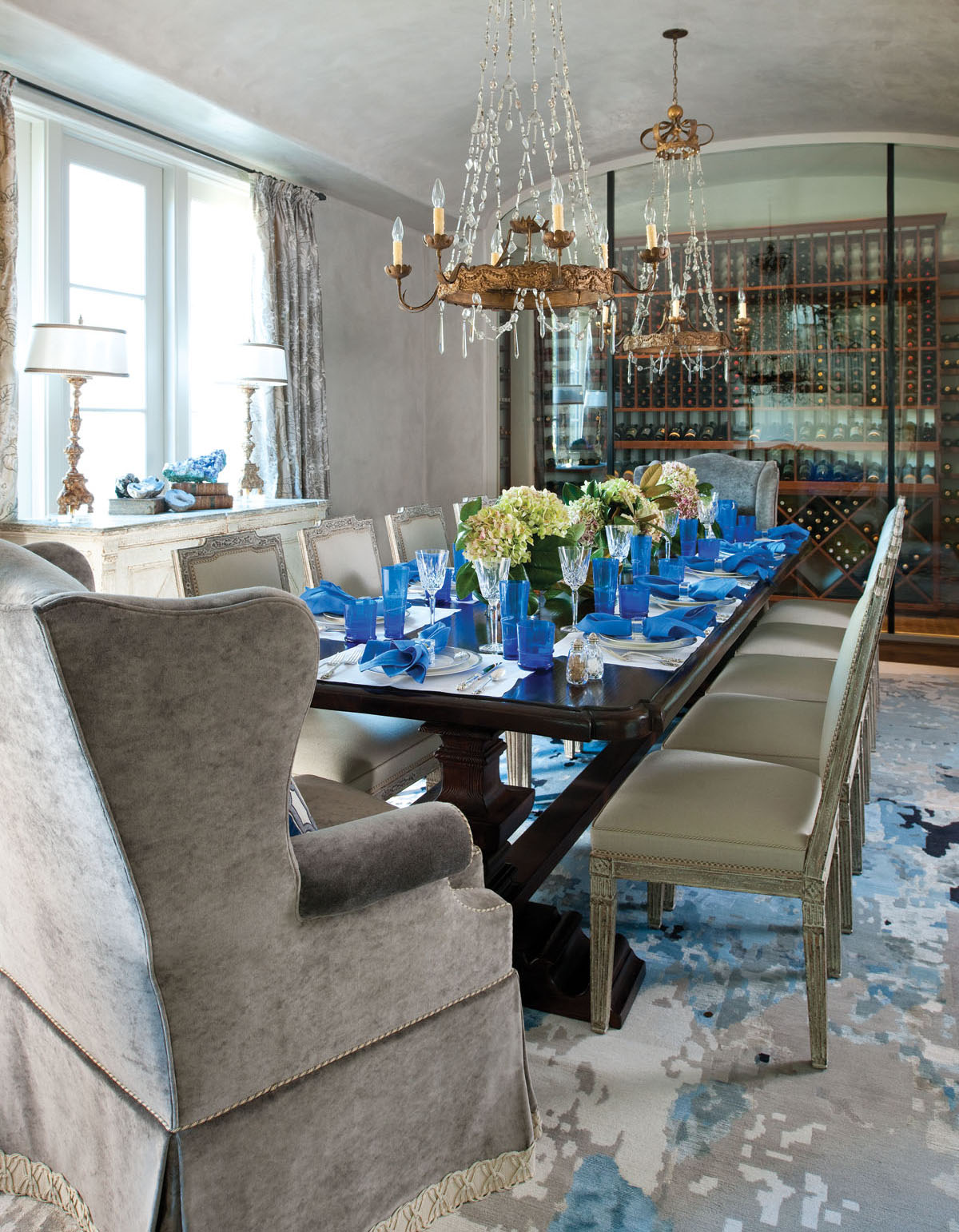
Lustrous Venetian plaster draws the eye into a dining room—both classic and contemporary—with more than a modicum of help from the pattern-splashed Stark Carpet and the pair of eighteenth-century chandeliers from Chateau Domingue, to say nothing about the assortment of cobalt blue crystal. Buffet is from Joyce Horn Antiques, Houston. Minton Spidell host chairs wear Rogers & Goffigon velvet and Samuel & Sons trim.

Taking to heart the French dictum that a grouping of like objects standing together has a stronger impact than if scattered around the room, a collection of geodes with striking crystal interiors rests on an Italian console among a cluster of candlesticks. Hanging overhead is a geometric form known as a “torus,” a carbon fiber composite with urethane enamel, by Houston artist Edward Hendricks. (Only one of the pair is seen.)
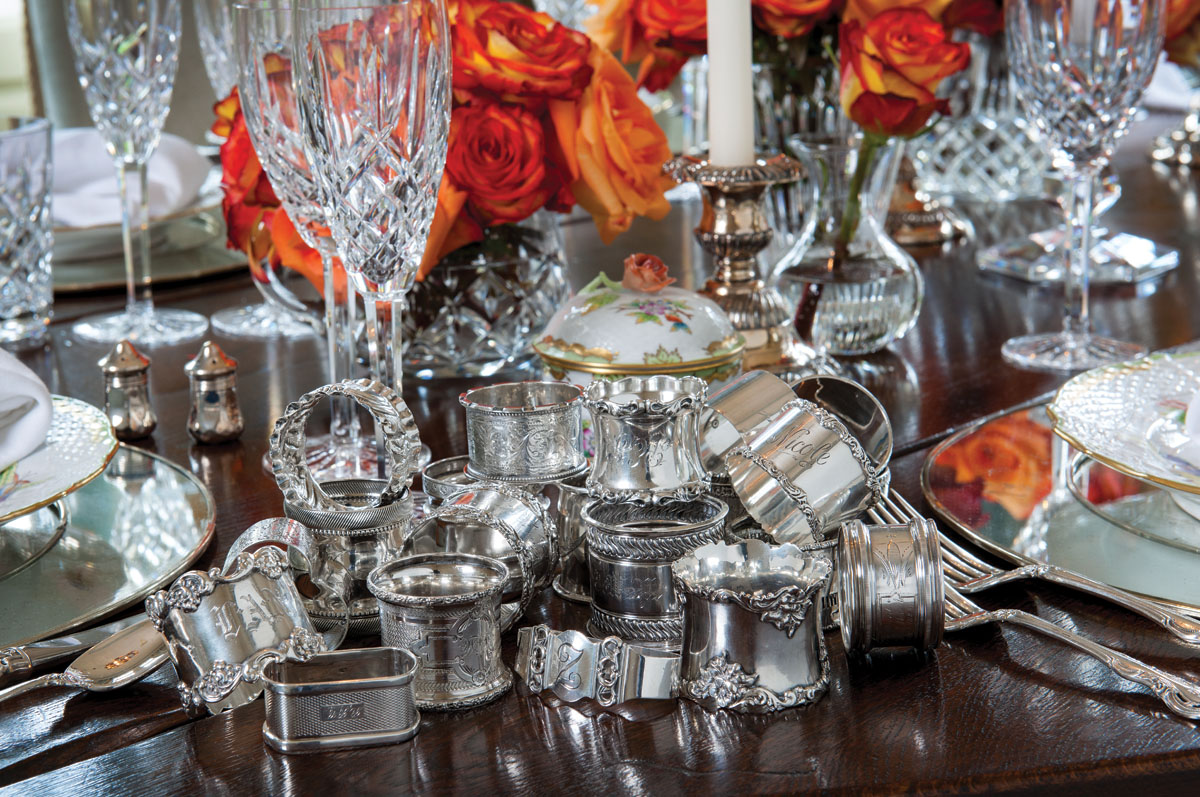
Flea Markets in France are the ideal place to sort through silver napkin rings, if not silver flatware, searching for initials or monograms suited to one’s family members.
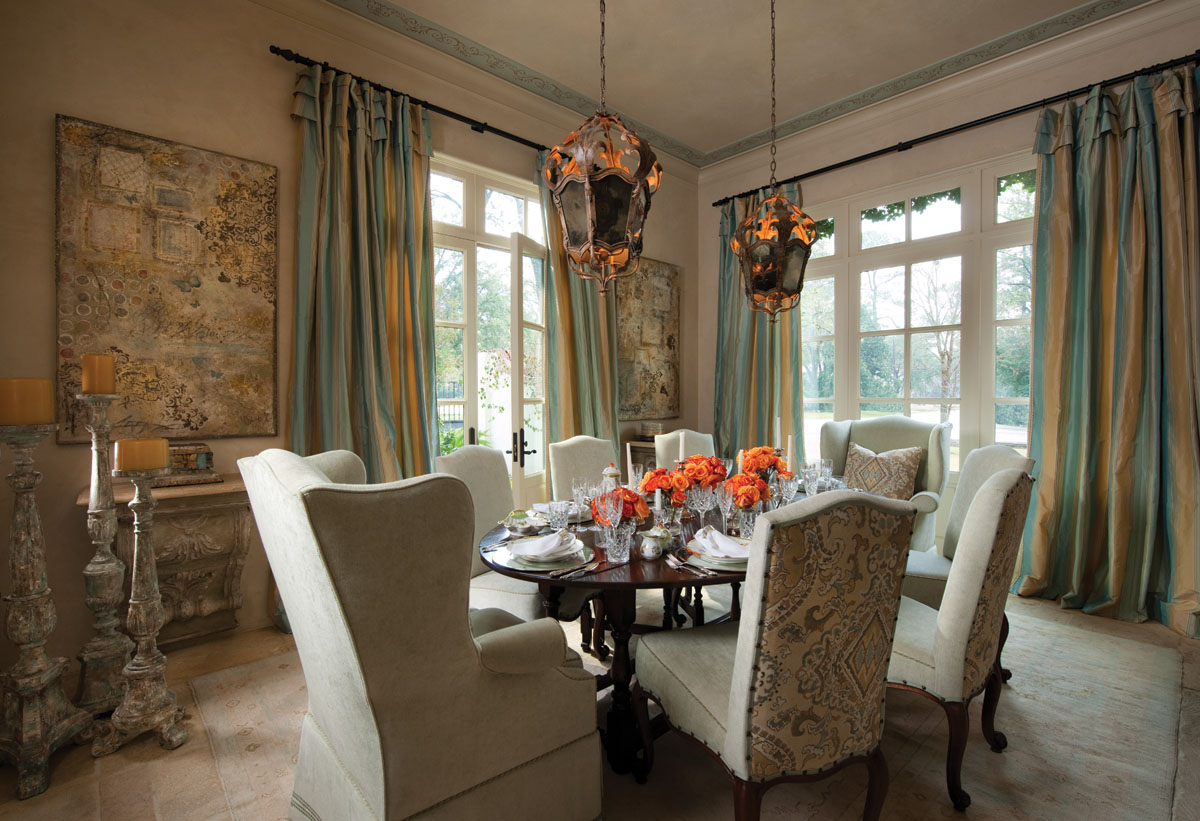
Living graciously calls for comfortable, generously scaled furnishings—and a setting that puts one at ease. Fabric on window treatments is from GP & J Baker. Antique console from Maison Maison, Houston; candlesticks and lantern pendants from Tara Shaw, New Orleans.
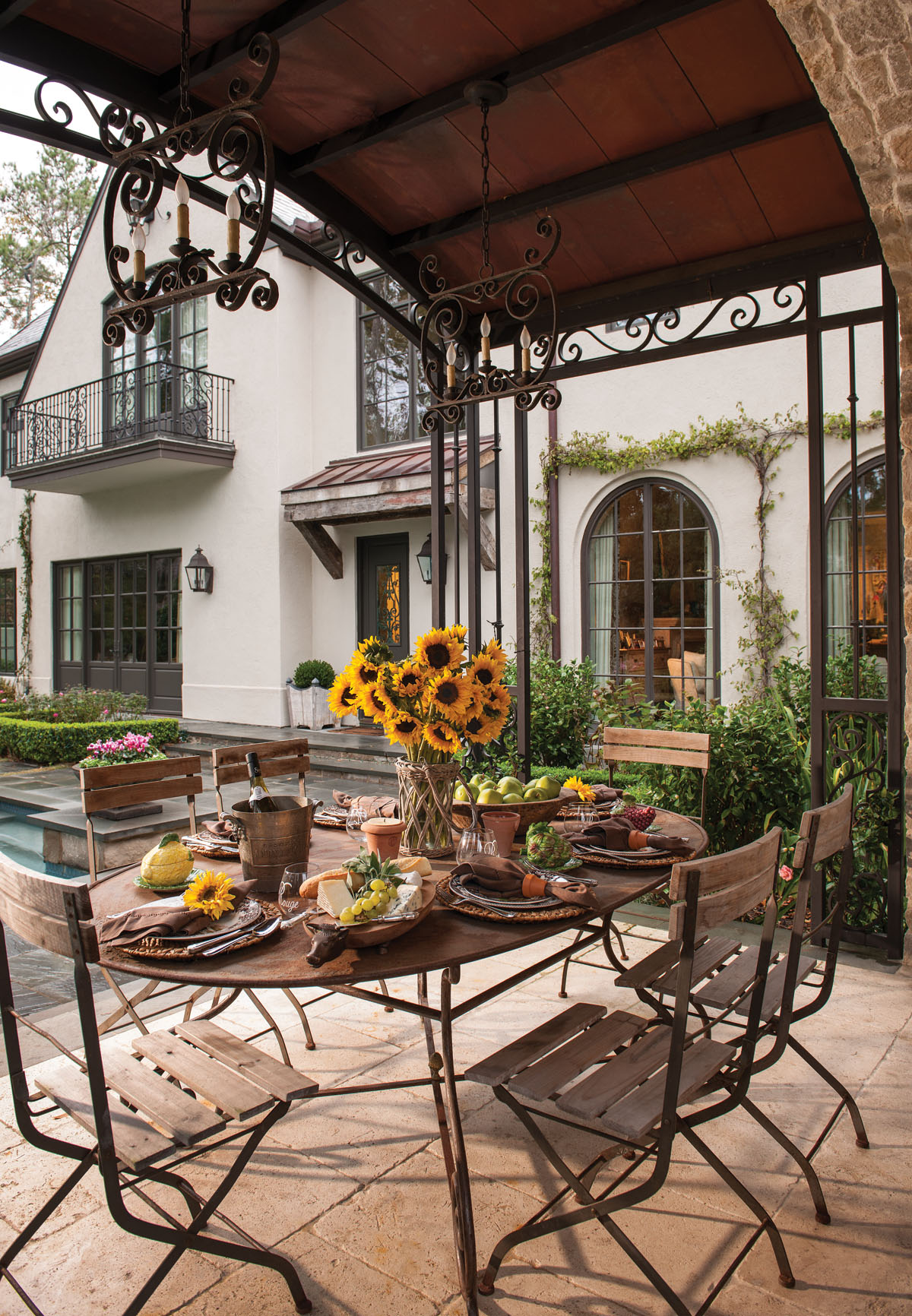
A mix of textures adds flair to even the most casual table settings.
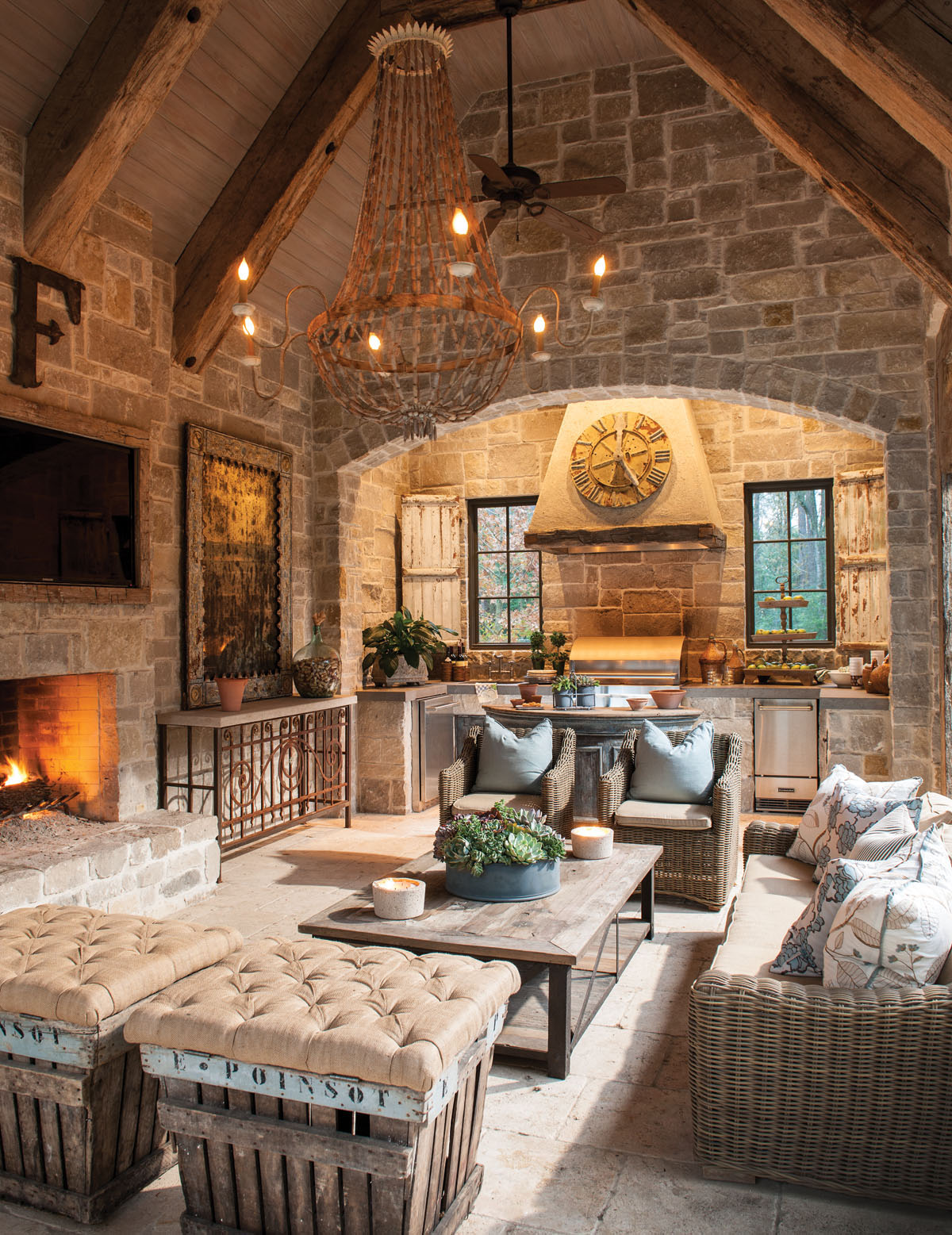
A loggia open to the elements is more than an accessory to the house. With a fully equipped summer kitchen and an array of notable amenities, it is a getaway idyllic for entertaining en plein air.
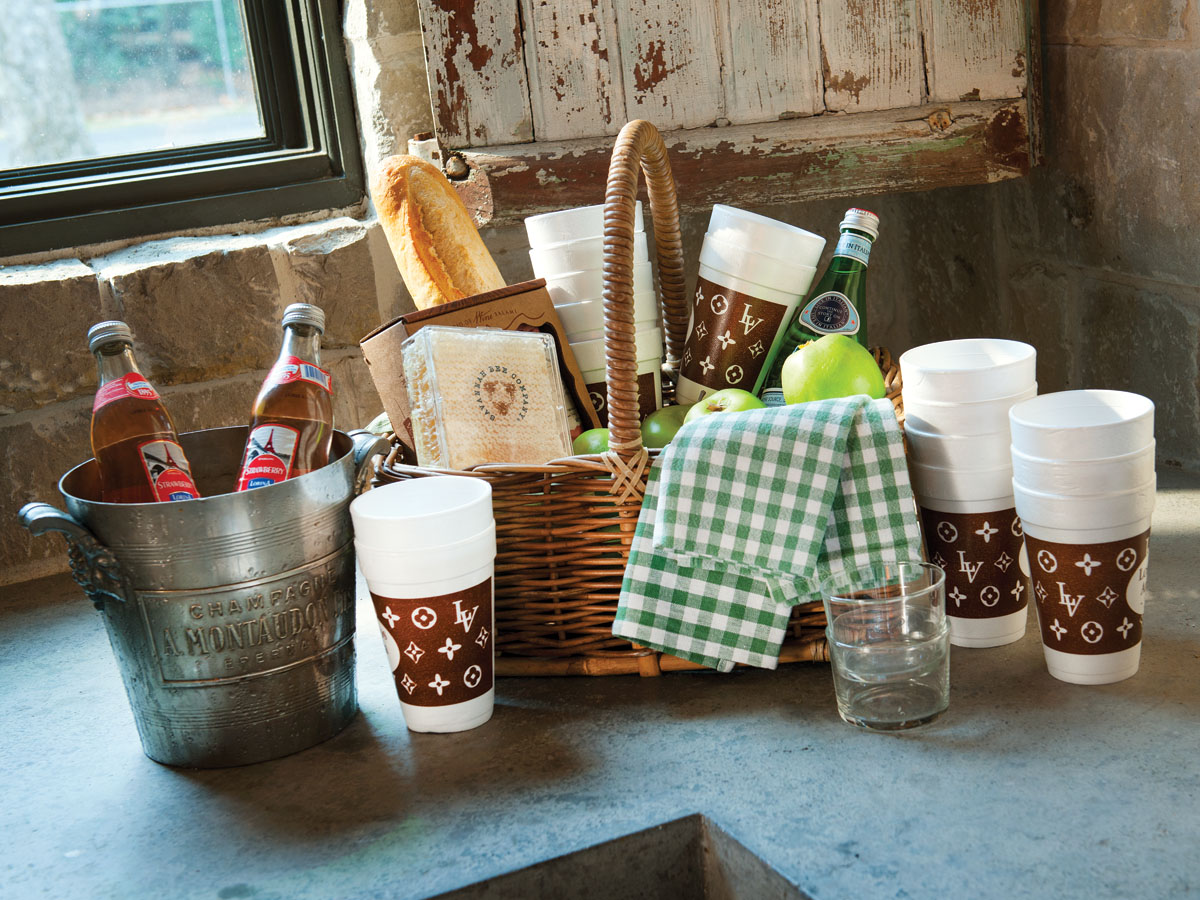
When it is time to move the party outside, a basket of necessities can help accentuate the mood.
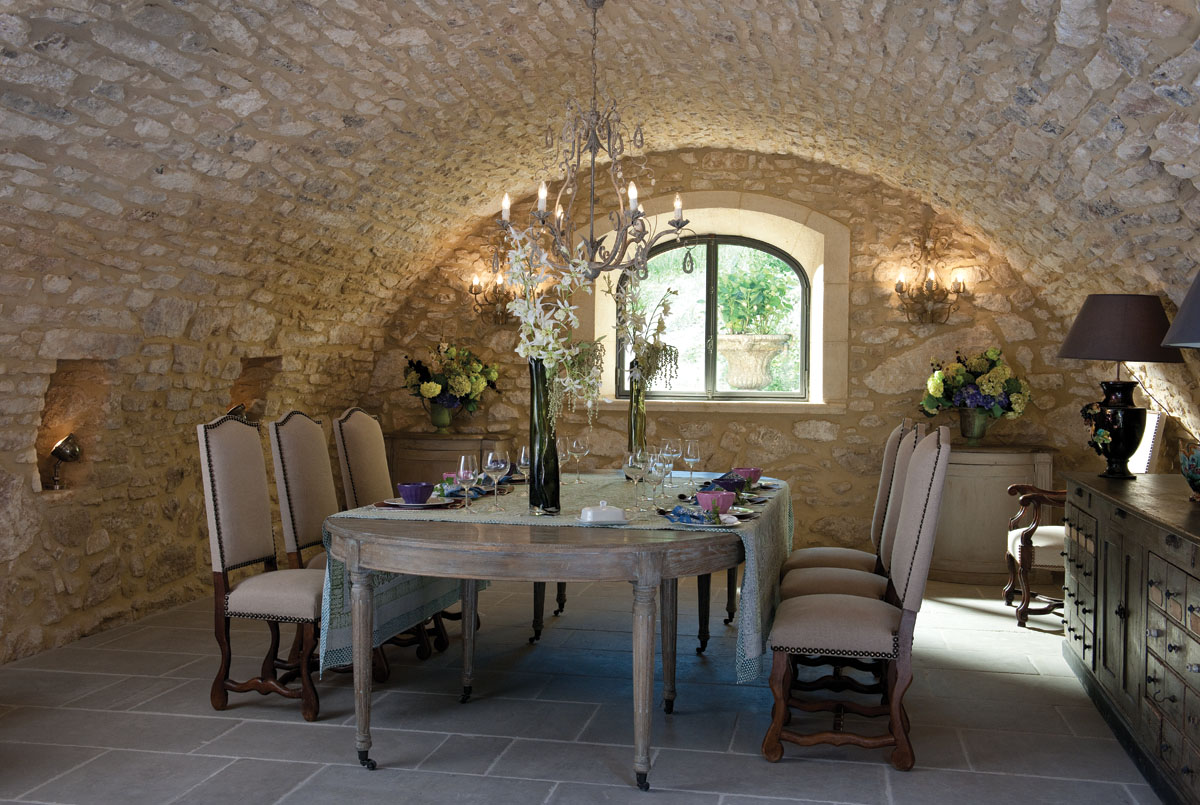
For ages, dining was literally a movable feast influenced by the season—with a simple tabletop supported on trestles moved from place to place. France’s first grand dining room was in the Loire Valley Château de Montgeoffroy, completed in 1776. Shortly thereafter, white linen tablecloths became commonplace in aristocratic homes. Nowadays, there is always a proper dining area, even in homes with small rooms.
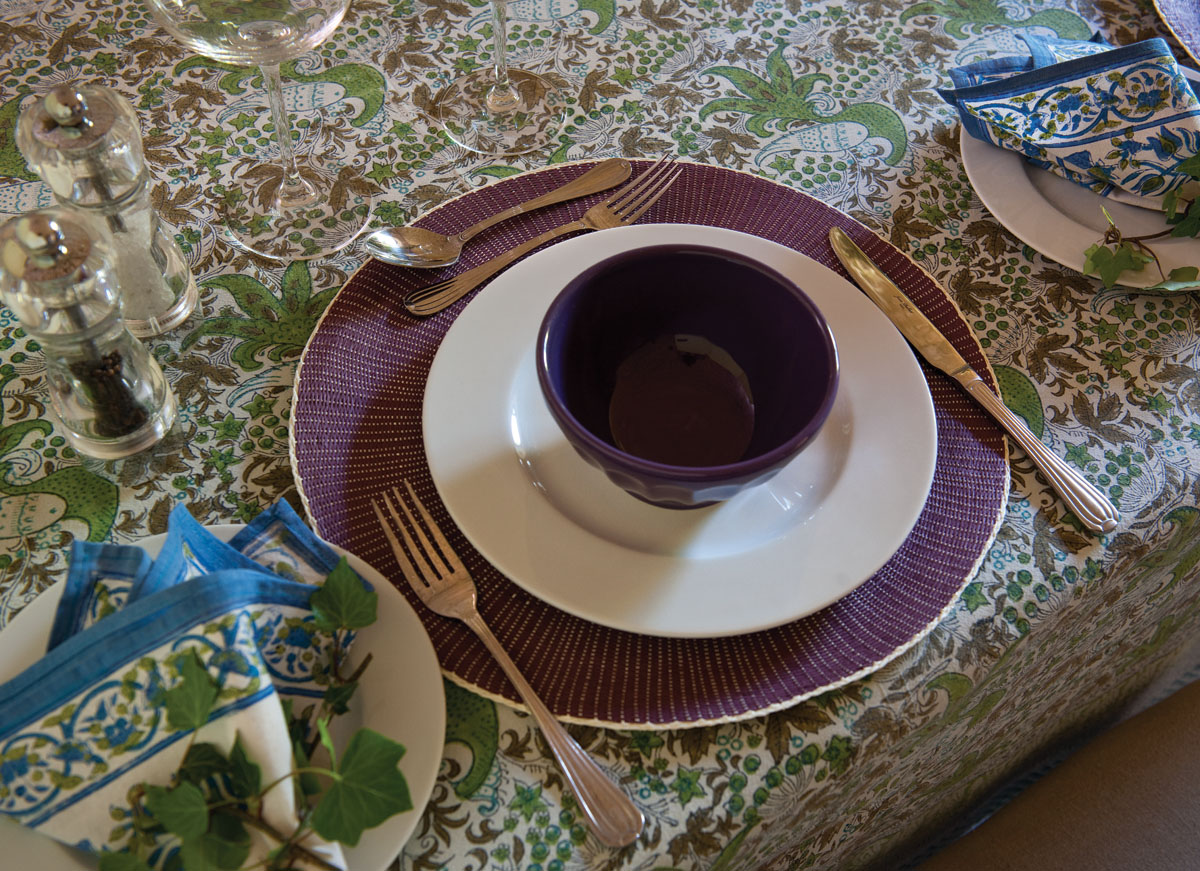
For a millennia, purple was reserved for royalty; so to this day, it has the potential of turning the most modest affair into an occasion. Fluted underplate is by Zodio, a Belgian company. The French tablecloth is from Linvosges. With purple hovering next to blue on the color wheel, and blue siding green, it is only fitting, then, that ivy clipped from the bastide’s exterior walls serves as napkin rings. No matter that Van Gogh often used opposing colors such as purple and orange to add life to his paintings.